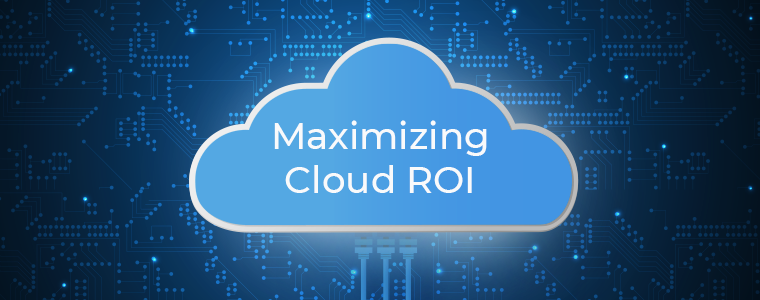$9000 Per Minute IT Wake-Up Call for Investment Management Leaders
Here’s the jolting reality: one minute of downtime costs the average firm a staggering $9,000. Extrapolate that to an hour, and you’re looking at a jaw-dropping $500,000. These aren’t just numbers; they represent the immediate loss of revenue, recovery expenses, investments in remediation efforts, system restoration, and the looming threat of regulatory fines.
In an industry where every minute counts, the financial health of your firm is on the line when systems go down. Reliable systems aren’t optional; they’re necessary. System resiliency isn’t a feature; it’s a prerequisite. Secure systems aren’t a luxury; they are your shield against reputational, financial, and regulatory risks.
Downtime is not just a glitch; it triggers a ripple effect throughout your firm, lowering your competitive advantage, hindering team collaboration, and diminishing investor confidence.
In this post, we’ll explore what’s at stake when systems go down and provide some recommendations for identifying and mitigating outage risks.
The Financial Consequences of System Downtime
The relationship between downtime and financial costs is linear. With more downtime comes various financial costs, producing substantial long-term repercussions on an organization.
One way to combat the financial costs associated with downtime is to conduct an IT infrastructure assessment to gather a clear understanding of how your current IT environment could expose your firm to avoidable system outages. Conducting an IT infrastructure assessment also gives you a playbook for addressing IT issues and mitigating outage risk.
The Impact of Downtime on Your Reputation
The repercussions of downtime extend beyond mere financial costs to encompass intangible yet profoundly impactful consequences. Distinct from conventional financial metrics, these intangible costs manifest in potential losses in investor confidence and the consequential impact on the firm’s reputation, potentially leading to investors withdrawing funds.
In this specialized industry, where precision and reliability are paramount, it becomes imperative to recognize that inaccessible or suboptimal operating systems can induce frustration among clients. This frustration, in turn, has the potential to tarnish not only the customer’s trust but also to jeopardize the broader reputation of the business, particularly in the eyes of discerning investors within the financial services and investment management sectors.
Safeguarding against these intangible costs requires a strategic approach that not only prioritizes seamless operations but also emphasizes the critical nature of maintaining investor confidence. By doing so, Managed IT and Cybersecurity services can play a pivotal role in mitigating the risk of financial withdrawals and fortifying the reputation of financial services and investment management firms.
Measuring the Cost of Lost Productivity
Another critical concern that demands attention is the impact of downtime on team collaboration and the potential repercussions for portfolio value and investment returns. When systems falter or networks face disruptions, the ramifications reverberate throughout daily operations, collaborative endeavors, and individual work tasks, creating a ripple effect across the entire organization.
The resulting slowdown in productivity can be attributed to various factors, including delays in project timelines, hindered collaboration, and loss of access to essential tools and applications. These challenges not only impede immediate tasks but also extend to eroding broader operational efficiency.
Beyond hindering daily activities, these disruptions have the potential to affect team collaboration, leading to delays in project execution and compromising the overall effectiveness of investment strategies. Moreover, the loss of access to essential tools and applications can directly impact the management of portfolios, potentially resulting in diminished portfolio value and suboptimal investment returns.
Therefore, addressing the broader spectrum of consequences stemming from lost productivity is vital for financial services and investment management firms relying on Managed IT and Cybersecurity services. This approach ensures not only the continuity of daily operations but also safeguards against potential losses in portfolio value and investment returns.
How Can Improved Managed IT Help?
Adopting the best Managed IT practices is instrumental in guaranteeing operational resilience. Below is a brief Managed IT checklist for organizations seeking to bolster their preparedness for downtime events.
- Implement a robust business continuity plan
- Include comprehensive risk assessments, regular system backups, and clearly defined protocols.
- Engage with Managed Service Providers
- Will ensure swift detection, response, and recovery in the face of potential disruptions.
- Focus on internal controls
- Regular updates on fixing downtime, employee training, and the deployment of advanced threat detection systems.
Final Thoughts
The financial wake-up call is clear and resonant: one minute of IT downtime costs the average firm a staggering $9,000, translating to a jaw-dropping $500,000 per hour. This isn’t just about immediate revenue loss; it encompasses recovery expenses, investments in remediation, system restoration, and the looming threat of regulatory fines. However, the true and total costs span much further than the losses incurred while systems are down.
Beyond the immediate financial toll, downtime triggers a ripple effect throughout your firm, impacting team collaboration, lowering your competitive advantage, and diminishing investor confidence. The intangible costs extend to potential losses in investor confidence and risks to your firm’s reputation, with the looming possibility of investors withdrawing funds.
To ensure operational resilience and mitigate the risks of downtime, adopting the best Managed IT practices is key. A comprehensive business continuity plan, engagement with the right Managed Service Provider for swift response, and a focus on internal controls, including employee training and advanced threat detection systems, are essential elements.
Connect with Agio today to run an IT assessment. Understand how your current IT environment could expose your firm to avoidable system outages and gain a playbook for addressing IT issues, mitigating outage risk, and securing the continuity of your operations, reputation, and financial health. Ignite urgency in securing your firm’s resilience and future success.
Share post
Featured Posts
Connect with us.
Need a solution? Want to partner with us? Please complete the fields below to connect with a member of our team.




